
Nowadays, many parents begin to care about their children’s psychological development and understand a little about children’s development psychology. Raising children can really get twice the result with half the effort. Let’s look at a classic psychological experiment first.
The Influence of Adult Facial Expression on Children’s Behavior
Professor Joseph Campos of the University of California, Berkeley, designed an experiment to see how the mother’s facial expressions will have a how effect on the child’s next behavior when a child encounters strange situations and wants to seek the mother’s advice.
The experiment used the design of “Visual Cliff”:
The lower part of a flat glass table top is divided into two parts, half of which is a common checkerboard pattern, which clings to the surface of the table. Although the other half is also a checkerboard pattern, it is sunken and has a clear gap with the surface of the table, so when viewed from the table top, the place where the two parts are connected looks like a [cliff].
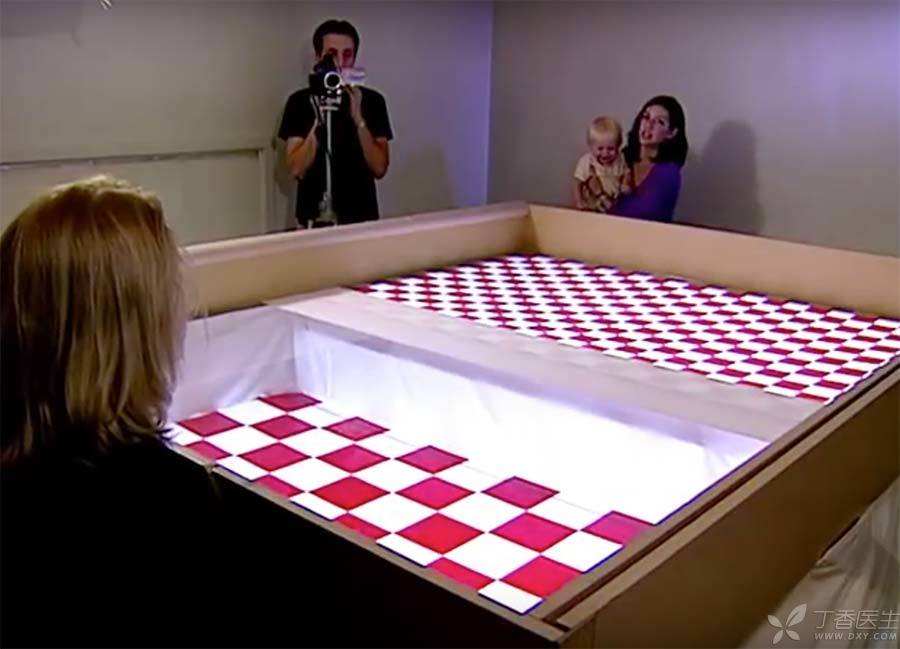
At the beginning of the experiment, a 1-year-old baby was placed on the side without drop, facing the mother standing on the other side of the table and the toys on the edge of the table.
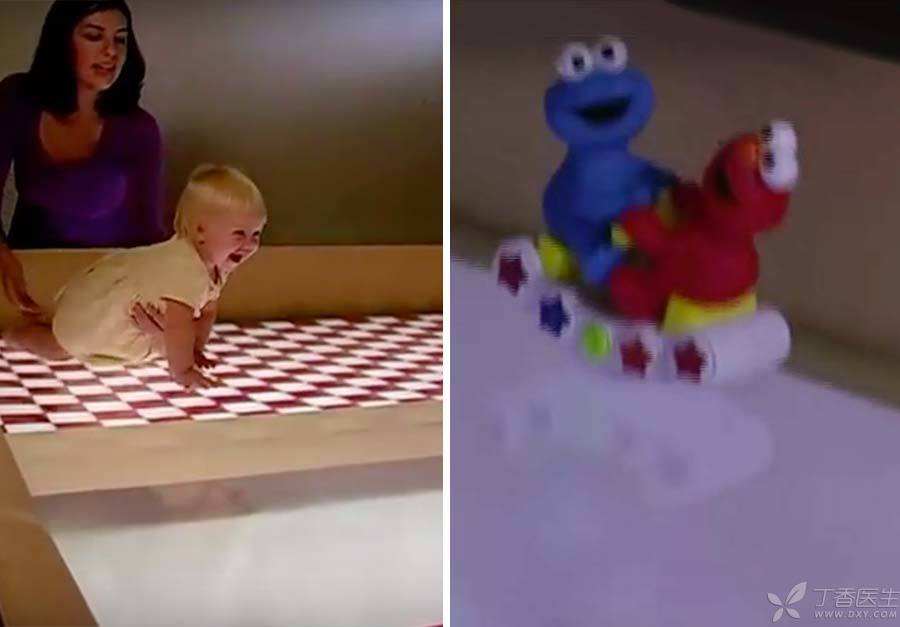
The baby climbed excitedly to the other side of the table, but stopped when she reached the edge of the [cliff]. She hesitated, not sure whether it was safe to continue climbing forward, and carefully extended her foot to try.
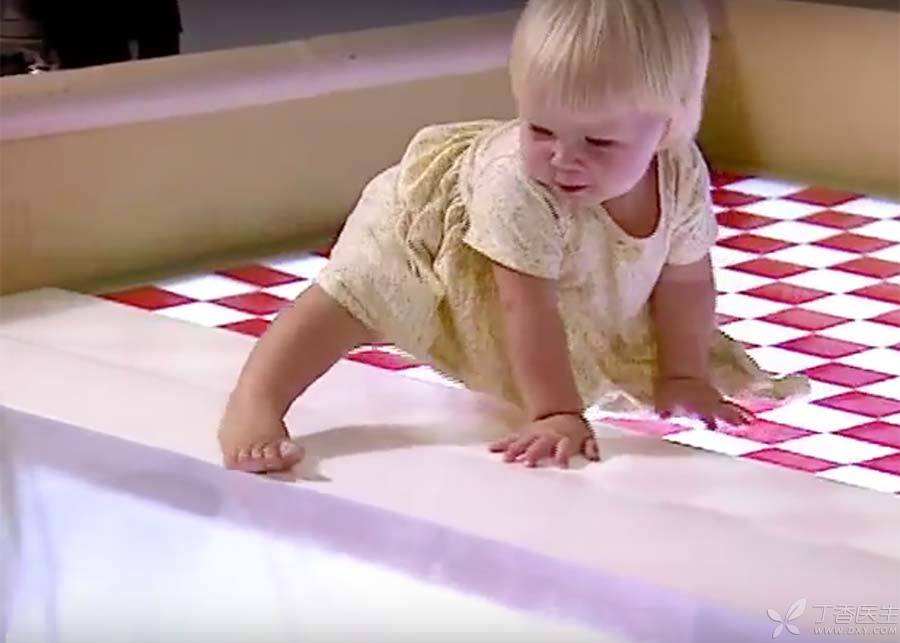
Then she looked up at her mother.
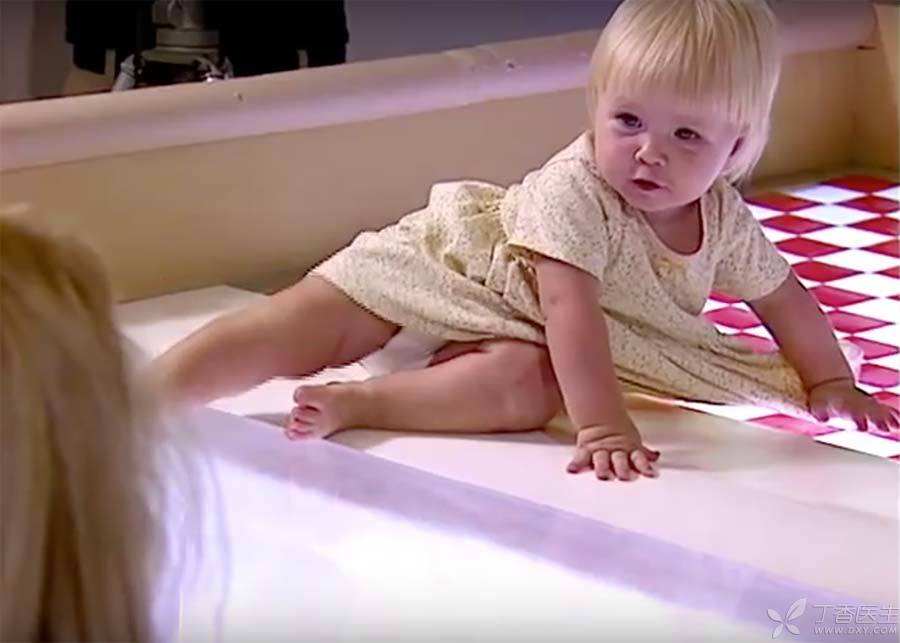
This is the baby seeking social-referencing:
After children can climb, they begin to have the ability to seek social reference. This means that when they are not sure whether a strange thing can be done, they will look at their parents to help them judge.
Some parents showed relaxed and happy expressions (did not speak) according to the experimental requirements.
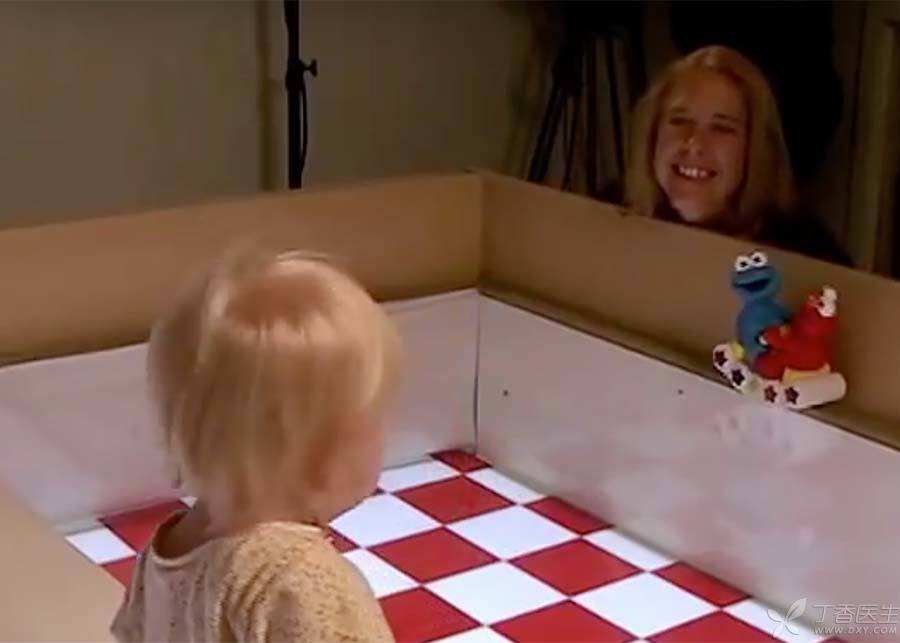
Another part of the parents were asked to make expressions of fear and panic (also don’t speak) (this expression really scared me

The results of the experiment show that when children try to climb over the [cliff], if they see the parents’ scared expression, most of them will stop moving forward and give up climbing over the cliff.
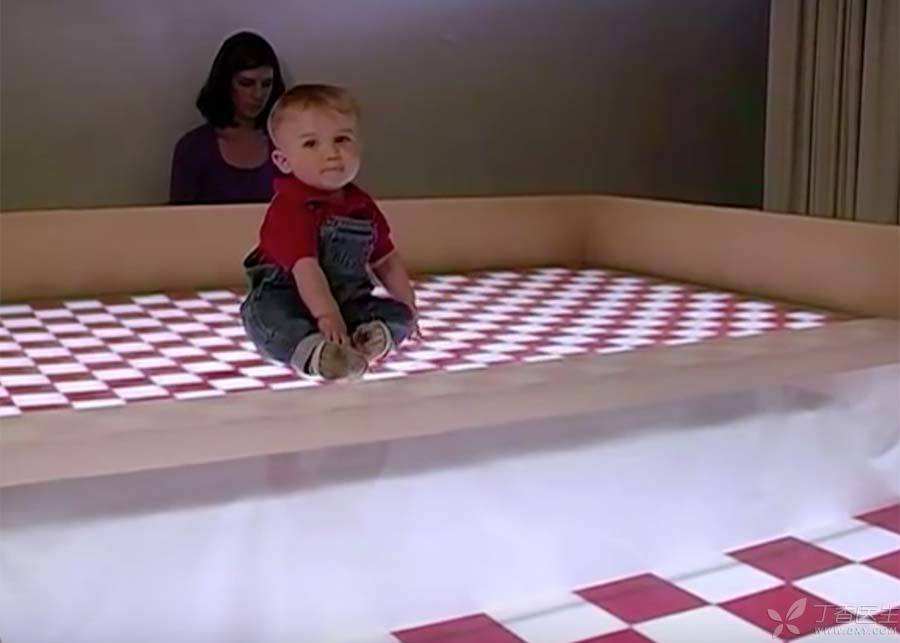
However, when children hesitate and see the relaxed and happy expressions of their parents, they obviously stick to their own pace of progress, crossing the edge of the [cliff] and climbing to the other side of the table.
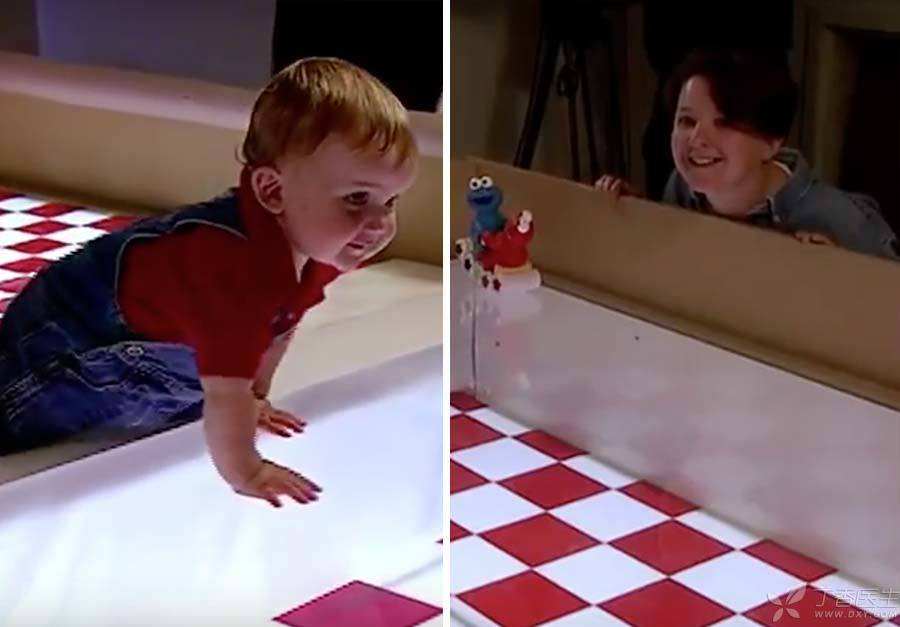
Experimental analysis
Children around the age of 1 already have a similar way of thinking as adults. When they come to a strange place or come into contact with unfamiliar things, We all turn to more experienced people and observe their expressions and behaviors to judge what to do next. Whether we notice it or not, our emotions are usually expressed in facial expressions, affecting children’s judgment and actions.
To watch the lab video, search for [Visual Cliff Experience] online.
Enlightenment of Raising Babies + Life Examples
STEP 1 Pay Attention to Children
In life, pay attention to find that children hesitate to try something and look at you as if they were asking [Can I? ].
Step 2: Encourage positive things
If you think what he wants to do is positive, safe, and clearly give him encouraging facial expressions or behaviors. If you think this is a good thing, but you feel anxious because your child has just started to contact, hide the anxiety and express confidence in yourself and your child.
Example 1:
If you want your child to try a new kind of food, instead of wasting your breath persuading him that [you taste it, it’s delicious], it is better to take a big bite, make an expression of enjoyment, and then say [it’s delicious], and the baby may also try to take a bite when he looks at the food and looks at you again.
Wrong practices:
Before he eats, you are worried that he will not eat. While persuading him in a hurry, you show a worried expression. The child will probably not eat.
Example 2:
Some parents asked how to guide their children to play happily with other partners. Some kindergarten teachers abroad do this: Observe the child’s every move. When the child tries to communicate and play with other partners and looks at the teacher uncertainly, he should look happy and encouraging. If he wants to add language, he should be relaxed and calm. When conflicts arise in the communication process, he can help solve them.
Wrong practices:
Some parents worry that their children will be bullied, knocked down and not playing well when dealing with their peers. Whether you realize it or not, this worry will be conveyed to their children through various channels, making them anxious and retreat from dealing with their small partners.
STEP 3 Stop Dangerous Things
If the child is going to do something you don’t want to see, or something dangerous, use other ways to prevent it, and at the same time, your expression should be consistent with your behavior. When your expression is consistent with your behavior, the child will know that you are serious, and this is your bottom line.
Why can’t children play with knives, can’t play with fire, and sit in safety seats obediently when riding, but can knock on plates and throw toys? Think about it and you will understand that, in fact, children can judge what is really impossible to do through your performance and what just makes you feel a little annoyed. There is no harm to what and it doesn’t matter if you do it.
4. Correctly Guide Exploration Behavior
Children have many exploratory behaviors like [knocking/beating/throwing]. Although they will not endanger safety, they may annoy you a little. However, the result of explicit prohibition is often repeated prohibition.
Smart parents will not ban it across the board, but will use actions to tell their babies that what can [knock/hit/throw] and where is suitable for [knock/hit/throw].
Example 1:
Seeing the child knocking on the plate, you can suggest that you finish the meal first and then go to play the drum and pentatonic harp together.
Example 2:
When you see a child throwing toys, you can throw the ball to the child. If the child is interested, put away the toys with the child, then start playing with the ball and tell him that the ball can be thrown because it is soft, etc.
Example 3:
When you see a child tearing a book, you can block it with your body, tell the child that the book is for reading, and then find some colored paper and paper plates to give the child a choice: Do you want to read or tear the paper? Then you can tear raindrops, noodles and other shapes with your children.
Example 4:
Seeing the child sweeping the jigsaw puzzle on the table to the ground with his hand, You can take the jigsaw puzzle box and catch the jigsaw puzzle falling from the table, so that when the child sweeps, the jigsaw puzzle will fall into the box. It not only teaches the child how to tidy up the jigsaw puzzle and free the table, but also demonstrates a cooperative way. When the child sweeps the jigsaw puzzle into the box, it can also exercise the hand-eye coordination ability _ ^
